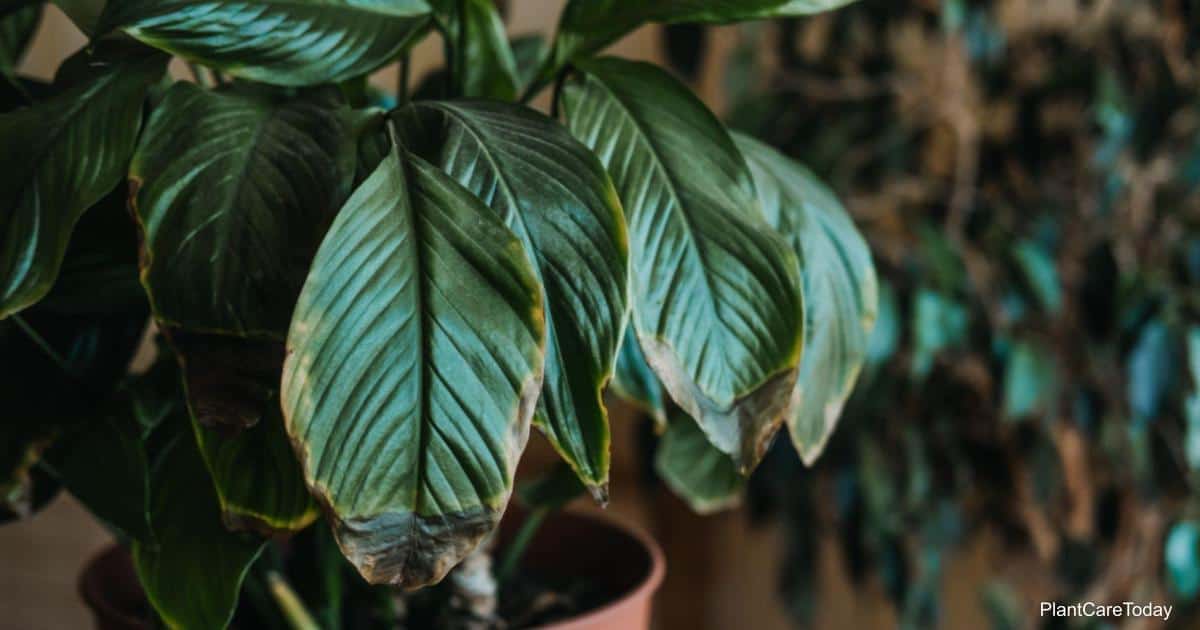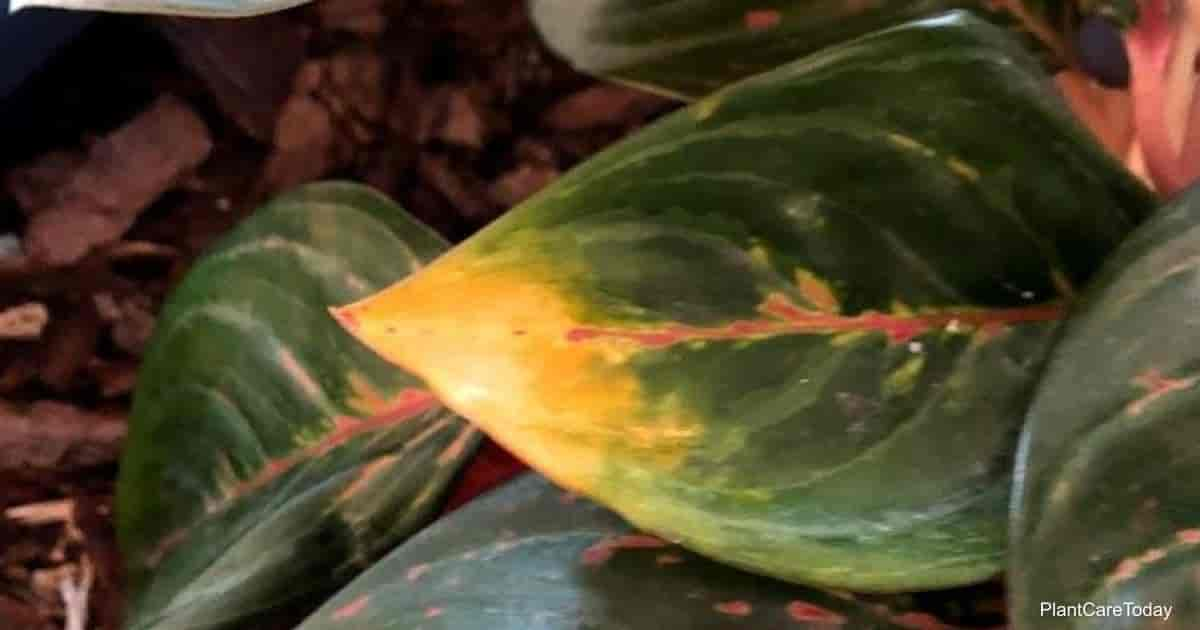Peace Lily (Spathiphyllum) is a shade-loving, herbaceous perennial member of the Araceae family of plants.
This freely flowering plant grows happily on the forest floors of Southeast Asia and Central America.
It can usually do quite well as a houseplant, but problems such as underwatering, overwatering, and improper temperature can cause stress and leave your Peace Lily looking quite ragged.
Even so, these tough plants can be rescued. In this article, we tell you how.
Keep Your Peace Lily In A Comfortable Setting
These tropical plants like to be in a setting that provides consistently warm temperatures of 55° to 65° degrees Fahrenheit at night and 60° to 75° degrees Fahrenheit during the day.
In addition, because they are forest dwellers, they like bright indirect sunlight or dappled light.
Water The Right Way
Underwatering will cause your plant to wilt, droop, wither and die, but if truth be told, overwatering a peace lily is usually the problem when things go bad.
These plants like moist but not soggy soil, and to accomplish this, you’ll need to be sure your Peace Lily is in a pot with ample drainage holes.
It is also essential that the soil mixture be light, airy, and well-draining.
It’s best to water Peace Lilies on a weekly schedule.
To provide your Peace Lily with the right amount of water, follow these steps:
- Place it in your sink or tub and pour water through it until it runs out of the drainage holes.
- Then, allow all excess water to run off before returning the plant to its usual location.
If you see that there is water in the plant’s saucer later, empty it.
It would help if you never allowed your plant to stand in water because this will cause root rot.
Avoid Overcrowding
Unlike many houseplants, Peace Lilies like to have a pot that gives them room to spread. If the rhizomes become crowded, your plant will begin to suffer.
If you notice that your plant is droopy and sad, and you are providing the right kind of light, temperature, and water, examine the soil to see if it’s time to repot.
Crowded Peace Lilies should be divided and moved into larger pots that give them room to grow.
Always use a light, porous mix of potting soil combined with perlite or chopped bark so that the roots get good air circulation.
Be sure to replace the potting mixture completely, and use a fresh, clean container for your plant.
Fertilize The Right Way
If your plant seems to have ample soil and you have been watering correctly, your Peace Lily’s problems may be caused by a lack of nourishment.
Even though these plants don’t need a lot of fertilizer, they cannot go without it indefinitely.
So it may be that a top-dressing of good soil mixed with the feeding of general-purpose houseplant fertilizer (20-20-20) and a good watering will solve your problems.
If you do repot your Peace Lily, you won’t need to fertilize for a while. Generally speaking, these plants should have half-strength feedings once at the start of spring and again in mid-summer.
Consistently deliver fertilizer in a thorough watering to avoid burning your plants’ roots.
Remove All Dead Or Damaged Parts
When you repot your plant, follow these steps:
- Examine your peace lily carefully.
- Trim away any dead or dying stems and leaves.
- Separate the rhizomes and throw out any that show signs of rot (i.e., soft, soggy spots).
- Treat the roots with an antifungal treatment before repotting if you suspect a fungal infection.
Inspect For Pests And Take Action
Of course, insects can always be a cause of distress in houseplants. This is especially true if your Peace Lily is overwatered.
Soggy soil attracts fungus gnats, and suffering plants of all sorts attract pests, such as mealybugs.
If you find pests on your struggling plant, separate it from other plants and take action to deal with the intruders.
Luckily, mealybugs (the most common pests on Peace Lilies) are relatively easy to deal with.
You can wipe them off with a damp cloth, blast them off with water, and spray the plant with a Neem oil concoction.
The key to getting rid of mealybugs is to treat them consistently for 14 days.
If you just treat it once and call it good, any eggs hidden on the plant will hatch, and you’ll have the same problem again in a couple of weeks.
Keep your infested Peace Lily in quarantine for 2 or 3 weeks. Then, treat it every 2 or 3 days, and keep a close eye on your other plants to be sure they have not become infested.





